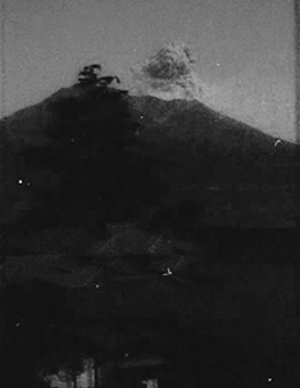 When you stop to consider how many travel accounts have been written about destinations like Spain, India, Africa, Central Asia and Russia, Japan is not a country that springs to mind. Native travel writing in particular, is not something we automatically associate with Japan, but this is often because very few works of travel are translated into English.
When you stop to consider how many travel accounts have been written about destinations like Spain, India, Africa, Central Asia and Russia, Japan is not a country that springs to mind. Native travel writing in particular, is not something we automatically associate with Japan, but this is often because very few works of travel are translated into English.
Many Japanese travelers, from medieval priests who journeyed through China and India, to more contemporary figures like Ariyoshi Sawada, who wrote beautifully about Okinawa, and Murukami Haruki, whose books on Greece are well thought of, have turned their gifts and insights to the travel form, without reaping the benefits of the larger audience that translations offer. There are a few if you look hard enough.
Matsuo Basho’s Narrow Road to the Deep North, is a much read haiku journey that provided the itinerary for Lesley Downer’s tribute On the Narrow Road to the Deep North, a journey by foot following as closely as modern development could allow, the same route. Dazai Osamu’s Tsugaru, which can be found in translation, inspired the travel writings of the late and much missed Alan Booth, who began his travel book The Roads to Sata, in Hokkaido.
Underpopulated, with a climate closer to Helsinki than Tokyo, Hokkaido summers are short, winters long and, for some, unendurable. Icebergs drift off its northern shores, fish freeze the minute they are removed from the water. The island provides the final chapters of Will Ferguson’s book Hokkaido Highway Blues, an account of hitch hiking Japan from the southern tip of Kyushu. One of the funniest books ever written about Japan, it is also one of the most beautiful. In a passage that captures all the freshness and promise of travel, he writes, “I woke to a morning that was filled with the damp, green smells of the sea. I strapped my backpack in place and walked out into the early morning mist, in that hour of the day when only the wind is awake.”
The northern Honshu district of Tohoku remains one of the least changed in Japan. Its reputation for rural mystique continues in the shamanistic practices of its blind fortune-tellers and the esoteric religious sects that make its fastnesses their home. The descriptive passages in Inoue Yasushi’s story “Under the Shadow of Mt. Bandai” are worthy of the longer passages of an Anne Radcliff Gothic tale. While you might struggle with the unflagging accounting of setting, readers can acquire a feeling for the remoteness of Northern Honshu in the late 19th century through this story. Roads and visitor facilities may have expanded in the area, but Mt.Bandai National Park, the setting for Inoue’s work, remains its eternal self.
A more personal look at a region of Tohoku is available in the English translation of Dazai Osamu’s Tsugaru. The Tsugaru Peninsula lies in the far north of Honshu. If travel is self-realization, Dazai certainly found out things about himself and parallels with the landscapes he passed through. “What I discovered during this trip” he wrote, “was the awkwardness of Tsurugu. Its clumsiness. Its gawkiness. Its ineptness at cultural expression. Things I have felt in myself.” If the journey is rich in ruminations, it is also laced in characteristic Dazai fashion, with plenty of drinking: “but for the existence of alcohol in this world,” he once wrote, “I might have been a saint.”
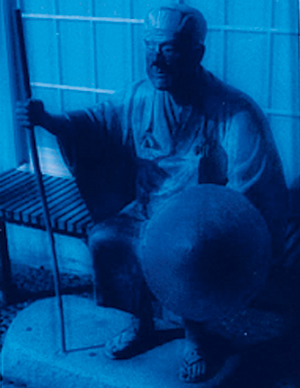 Word of mouth about the best hotels to stay at in Japan spread quickly among Meiji era travelers, and soon there were books like The Murray Guide to Japan, to help them. A perennial favorite was the Fujiya Hotel in Miyanoshita, a small village in the Hakone region. Over the years, vast numbers of the famous, or the merely wealthy, have chosen to base themselves at the Fujiya on their mandatory Fuji viewing excursions.
Word of mouth about the best hotels to stay at in Japan spread quickly among Meiji era travelers, and soon there were books like The Murray Guide to Japan, to help them. A perennial favorite was the Fujiya Hotel in Miyanoshita, a small village in the Hakone region. Over the years, vast numbers of the famous, or the merely wealthy, have chosen to base themselves at the Fujiya on their mandatory Fuji viewing excursions.
The hotel suited the leisured classes, Europeans and Americans who were charmed and mollified by its familiar, unexpected comforts. Those who came for a day or two, often ended up staying for weeks or even months, pouring retrospective praise on the hotel. Colin Simpson, in his travelogue Japan: An Intimate View, opined that “the Fujiya is a quite exceptional hotel, and, after staying there, I saw no reason to down the claim that it is one of the best hotels not only in the Orient, but in the world.” The Fujiya Hotel’s guest register makes fascinating reading. Well-known figures that have stayed there include the Showa Emperor, the king and queen of Sweden, and India’s first Prime Minister, Pandit Nehru. Photographs grace the hotel’s museum and corridors, showing images of other guests like Charlie Chaplin, John Lennon and Yoko Ono, and the writer Mishima Yukio.
Not everyone swoons over the hotel. Robin Gerster in his 1999 book Legless in Ginza, wrote “Despite its self-conscious ‘Western’ sophistication, the Fujiya is actually a pretty docile, even dowdy establishment.” Personally, I found it a very pleasant place to stay, its dowager character and docility an additional charm, well in keeping with its much-touted Victorian-Meiji image. Despite some slapdash paint work and the presence of telltale air-bubbles under the wall plaster indicative of rising damp, the period furnished second-floor room I occupied in the original wing overlooking the carp pond was, as a Victorian guest might have said, most commodious.
Literary descriptions of Edo and Tokyo by both Japanese and foreign writers are legion. When the first foreign tourists began to appear, Tokyo formed part of a New Grand Tour of the Far East, one that might include a spell in Shanghai and Hong Kong. Others, like the Irish-Greek writer Lafcadio Hearn, were more serious, intent on accomplishing something in Japan. A Yorkshire woman, Isabella Lucy Bird, author of the travel classic Unbeaten Tracks in Japan, arrived in Tokyo in 1878. A devout Christian, a Victorian with unflinching moral views, she was by the standards of her day, an open-minded writer driven by a strong spirit of inquiry.
Bird took a rickshaw in the company of Basil Hall Chamberlain, an English author and professor at Tokyo Imperial University, to the Senso-ji temple in Asakusa, where she found “much that is highly grotesque at first sight. Men squat on the floor selling amulets, rosaries, printed prayers, incense sticks, and other wares. Ex votos of all kinds hang on the wall and on the great round pillars. Many of these are rude Japanese pictures.” Encountering the temple’s main altar, she found a concentration of:
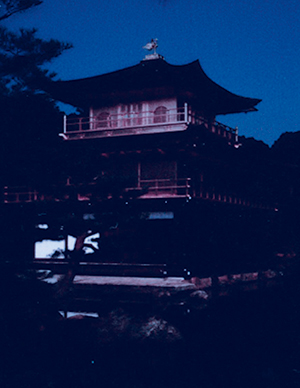 …shrines and gods, gigantic candlesticks, colossal lotuses of gilded silver, offerings, lamps, lacquer, litany books, gongs, drums, bells, and all the mysterious symbols of a faith which is a system of morals and metaphysics to the educated and initiated, and an idolatrous superstition to the masses.
…shrines and gods, gigantic candlesticks, colossal lotuses of gilded silver, offerings, lamps, lacquer, litany books, gongs, drums, bells, and all the mysterious symbols of a faith which is a system of morals and metaphysics to the educated and initiated, and an idolatrous superstition to the masses.
Although writers like the late Kafu Nagai, Tokyo’s most prescient of chroniclers, were already beginning to lament the passing of old Asakusa even in the forties and fifties, fortunately for us, most of them underestimated the robustness of the shitamachi, downtown tradition and it’s gift for renewal. Though the shadows cast across the nearby Sumida River are more likely these days to come from office blocks and raised expressways than tea houses or the tenements of dissolute poets, they would undoubtedly recognize the essentials of present day Asakusa, despite many of the distressing and mindless changes. And its people remain a friendly, feisty bunch. The poet James Kirkup in his book Japan Behind the Fan, went so far as to say, “among all the Tokyo people the only ones I really like are the residents of Asakusa.”
Unlike Tokyo, which has both its followers and detractors among writers, Kyoto has almost exclusively inspired tributes from those who have written about it. This applies even in the cynical modern age. Junichiro Tanizaki, in his majestic novel The Makioka Sisters, describes a visit to Heian Shrine and the obvious pleasure it gives members of his fictional family: “The next morning they strolled first of all along the banks of Hirosawa Pond. Teinosuke took a picture with his Leica of the four of them–Sachiko, Etsuko, Yukiko, and Taeko–lined up in that order under a cherry tree whose branches trailed off into the water.” Pico Iyer spent a year in the city starting in 1987, captivated by its gardens, still temple compounds, and its women, whom he found “the picture of impassive chic in their expensive Dior dresses, lustrous hair waterfalling down their downturned heads as they marched in well-pressed battalions from one shop to the next.” No wonder he eventually settled in nearby Nara.
The 24 year-old Rudyard Kipling arrived in Nagasaki aboard the P&O steamer Ancona on April 15, 1889. The writer’s keen journalistic eye told him “the knowledge that you may never live to see an especial treasure twice teaches the eyes to see quickly while the light lasts.” At the customs gate to the city, the great writer to be was “told in faultless English by a young gentleman, with a plated chrysanthemum in his forage cap and a badly fitting German uniform on his limbs, that he did not understand my language.” Such self-deprecation among the capable has not changed. Kipling would certainly recognize the contours of Nagasaki harbor today, though many of the details would baffle him.
Kobe was another of the early foreign settlements. Meira Chand’s 1979 novel, The Gossamer Fly, is set in the city, the parts that seem to be infiltrated by nature. Quiet, disturbing dramas unfold against a backdrop of gardens and houses in the wealthier, elevated districts of the city. Like the Japanese writer Tada Chimako, Chand enjoys describing the natural setting: “Sun glared harshly in the garden, heating colors to a molten pitch. The greens of leaves and grass ran easily into one another, acid and lime.” Even now, in post-earthquake Kobe, there is this same intensity of green up on the slopes. I much enjoyed her novels when I first came to Japan and have often wondered what became of the talented Ms. Chand?
The Inland Sea consists of over 750 inhabited islands, many of them tiny settlements, little more than clusters of rocks. The green and charcoal-colored sea is also the setting for petro-chemical plants, squalid ports, and the stanchions of giant, often unused bridges. It remains a beautiful region, and from a peak on any one of the islands it is possible to gaze into the far off distance, across a compression of green and purple mounds, one stacked behind the other. That profoundly attentive writer, Donald Richie, described the little Inland Sea port of Tomonoura at the end of the sixties, having “the casual look of most towns where progress has been late in arriving. It is a crosswork of little streets like those in Italian mountain villages.” Forty years later, he found more tourists, more signs in English, less boats, but also fewer “smokestacks fouling the view.” The port is still a delightful place to wander, and the lack of polluting industry seems a fair tradeoff for more visitor attention.
The late Alan Booth approached Yamaguchi City on foot. This was part of his long walk from the tip of Hokkaido to the end of Kyushu, a journey recorded in his book The Roads to Sata. Booth appears to have liked the city. “The night was cool and the twin green towers of St Xavier’s Cathedral rose above the city like the upraised arms of a surrendering foe,” he wrote in a glow of first impressions. The chapel, a memorial to the saint’s mission and brief sojourn in the city, was destroyed in a fire in 1991 that took everything except its bell. The new church, an exercise in cement and stainless steal is an interesting design, but lacks perhaps, the warmth of the original.
Kumamoto is a fine city with a charming old tram system. The first of its two main sights, Kumamoto castle, is a reconstruction, but a faithful one, and as the years pass and the materials weather, it becomes indistinguishable from its original. The park around the fortress is an extremely pleasant place to stroll and take in the cherry trees in early spring. The city’s second attraction, Suizenji koen, is one of the most famous stroll gardens in Japan. While the outline and general features have not changed a great deal, cheesy souvenir shops and noisy tour groups disturb the intended tranquility. Vending machines and smoking sites add to the desecration. The use of Suizenji as a recreational space is nothing new. In Herbert G. Ponting’s 1911 chronicle, In Lotus-Land Japan, the author enjoyed a cone of shaved ice and fruit syrup there in humid August. Cooling off under the shade of a tree, he watched as men plunged into the pond, while “tiny girls and boys paddle in the water or scamper over the grasses.’
Kagoshima may not exactly be the “Naples of the Orient” its locals claim, but this well-appointed city of warm breezes and palm trees, commands some stunning views across its bay. And then there is the massive silhouette of Sakurajima, the city’s very own Vesuvius. The Catholic writer Endo Shusaku, used the location of the cone for his 1959 novel Kazan (Volcano).
He is said to have hired a helicopter for research purposes, peering down into the smoky depths of the volcano. Endo’s description of the island is not flattering: “The ashy volcanic soil grew nothing but tangerines, and some patches of giant radishes and peanuts… the back country hamlets were poverty-stricken and wretched. Farmhouses were caked with volcanic ash and dust, low-strung and unsanitary like pig-sties.” Here is an instance where things actually seem to have improved. The radishes, peanuts and tangerines are still there, along with its famous purple-colored sweet potatoes and groves of loquats, but the villages and roads are certainly in better shape, and the sub-tropical vegetation, including some sea-facing banyan trees, creates an appealing southern mood.
The Japanese may have discovered Okinawa, but the world at large has not. Perhaps we should be thankful for that. With its tragic history of occupation and sacrifice, the islands are not unblemished. In Kushi Fusako’s 1932 short story, Memoirs of a Declining Ryukyuan Women, the narrator observes, “We always seem to be at the tail end of history, dragged along roads already ruined by others.” To some extent Okinawans are still held hostage to history.
Its past resurfaces with a shock in Okinawan writer Shima Tsuyoshi’s brilliantly conceived Bones, a tale set on the ghost-ridden mainland. Here, a construction company headed by a boss from Osaka, hell bent on erecting resort apartments over the site of a mass grave attempt, quite literally, to bury the past and the local sensibilities that go with it. The narrator describes the construction site in Naha: “The denuded slope was like a half-peeled papaya. The top had been lopped off, and from there to the road a quarter of the way down the hill the red clay was exposed to the elements.”
It’s not a pretty picture, but on balance it must be said that nature, especially in the southern Okinawan chain known as the Yaeyamas, has fared extraordinarily well. The blue waters and coral gardens of these smaller islands boast some of the most exquisite, crystalline clean waters in the world. Okinawan poet Tsukayama Issui’s 1931 verse, Entering the Harbor of a Southern Island, still holds true today:indigo island smoke rising red roofs vegetation clouds above the flowers beneath the leaves blue parasol.
Story & photos by Stephen Mansfield
From J SELECT Magazine, March 2008

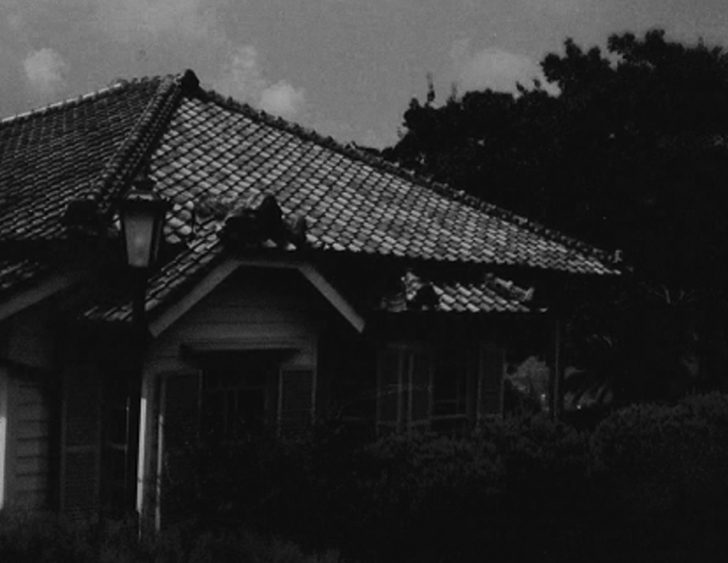



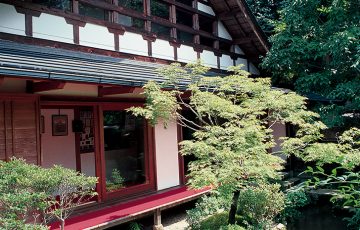

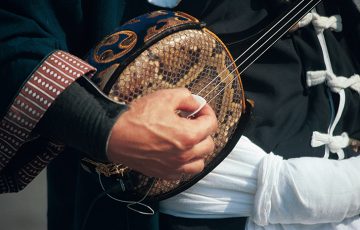

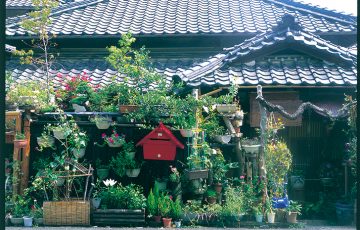
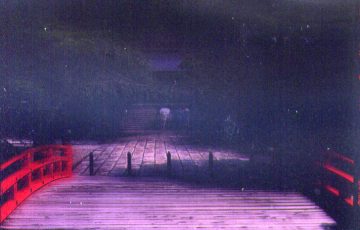

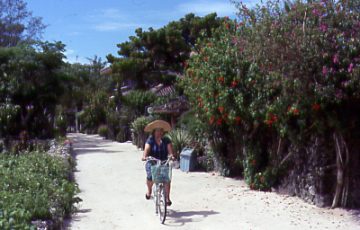


Recent Comments